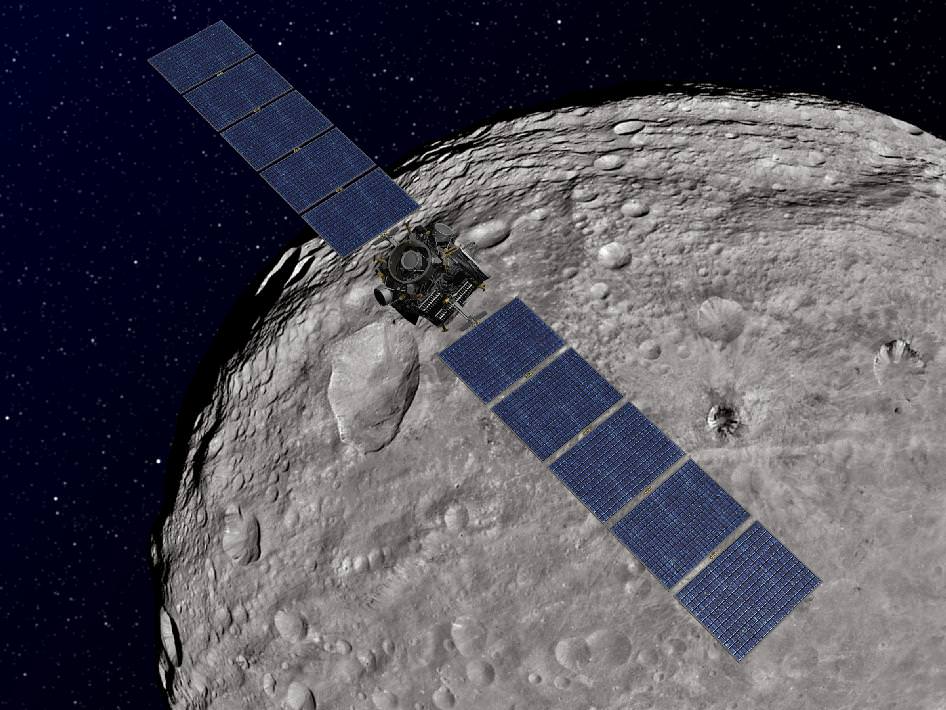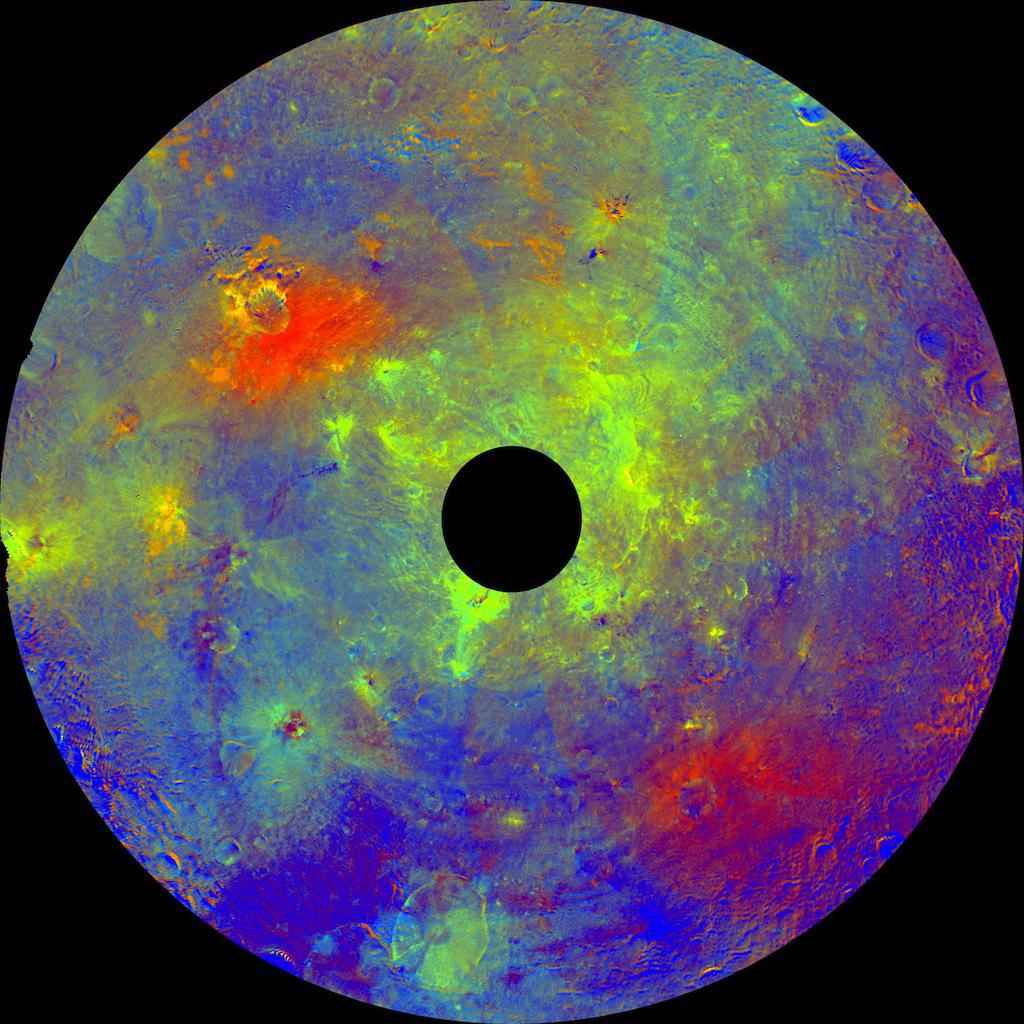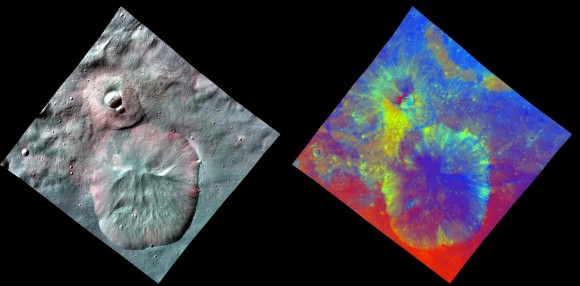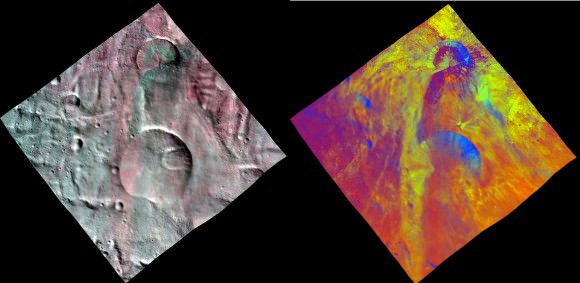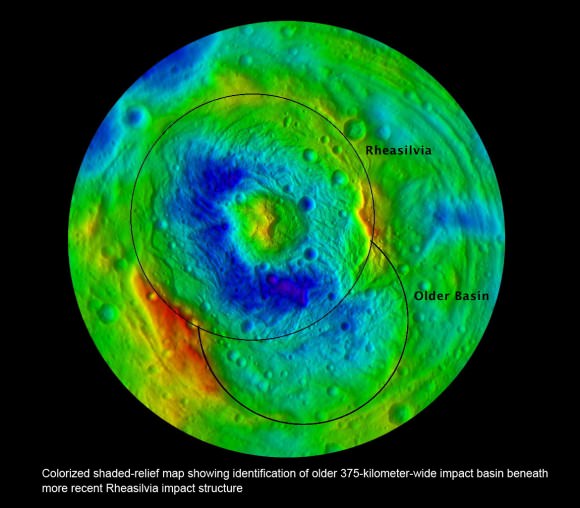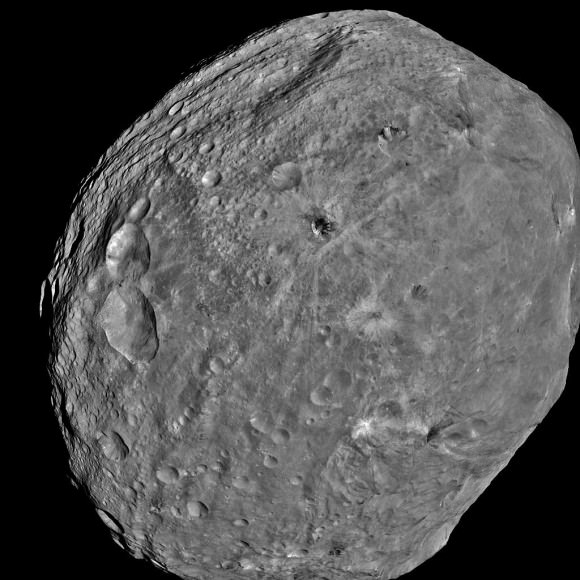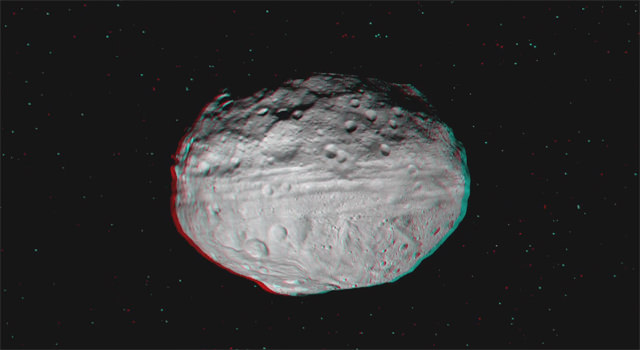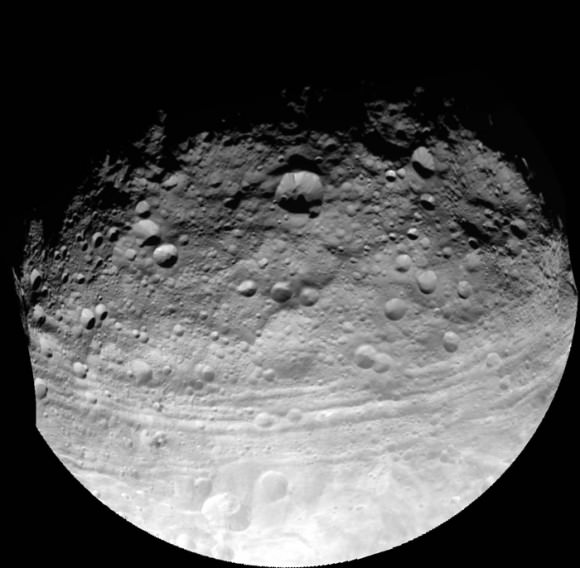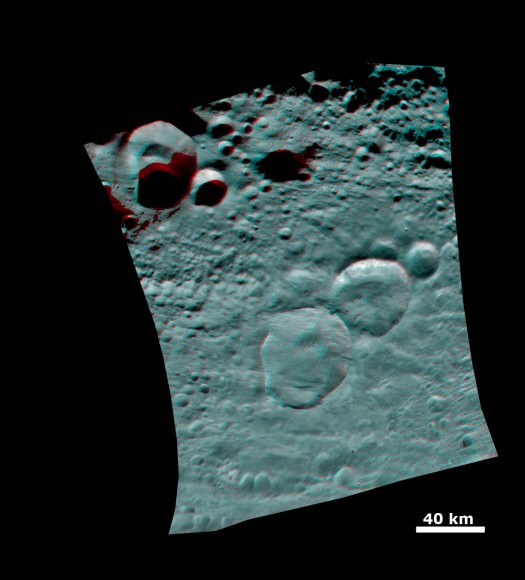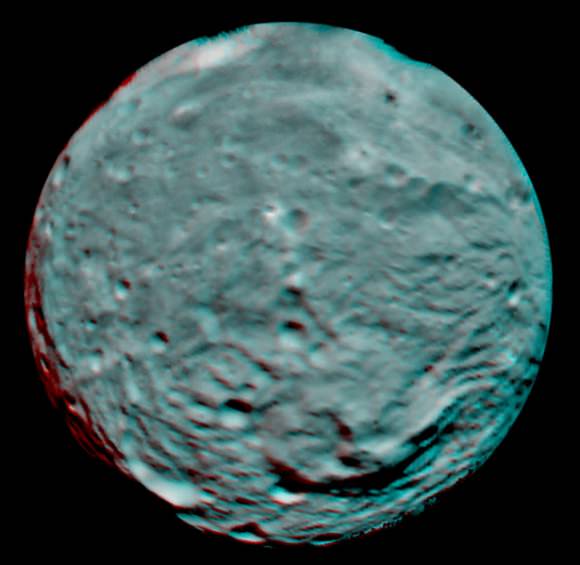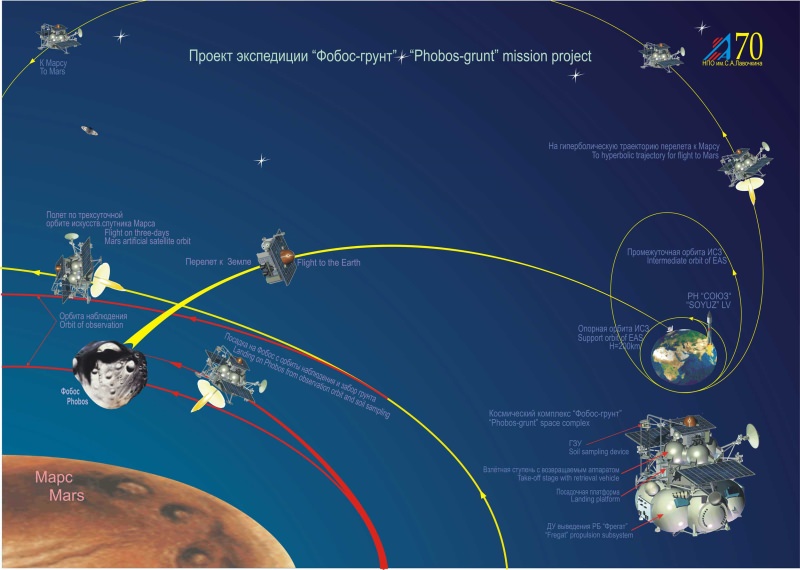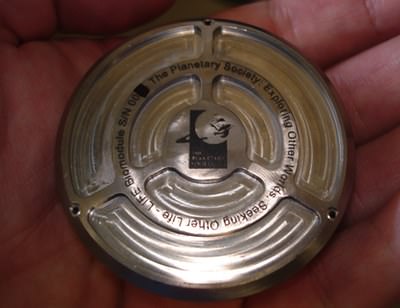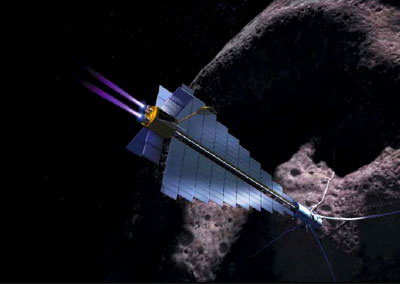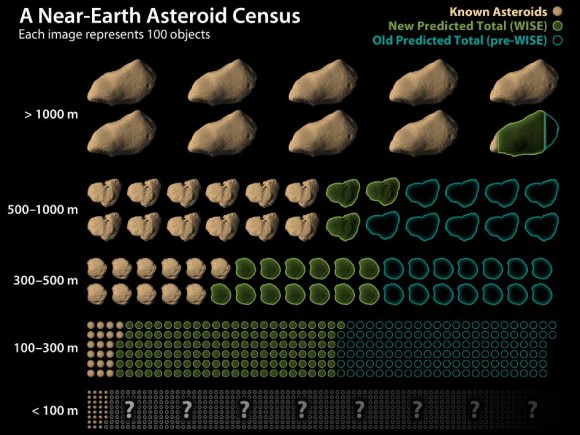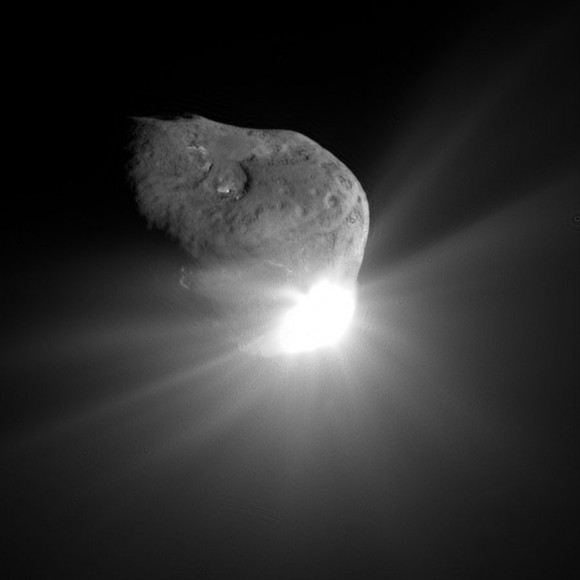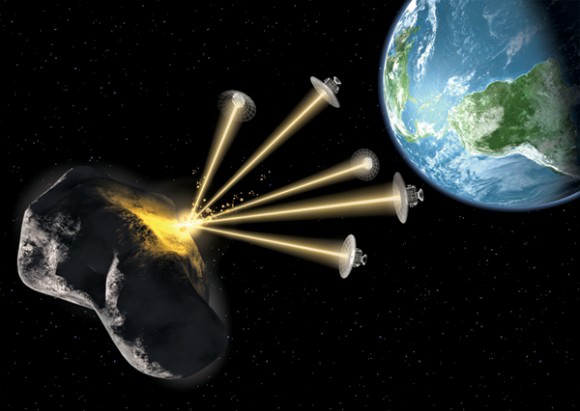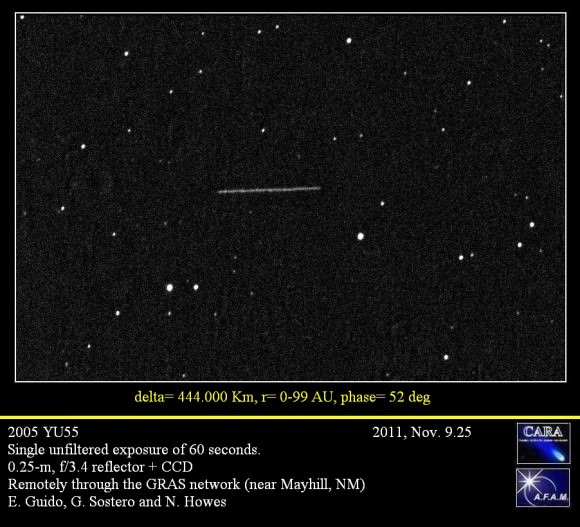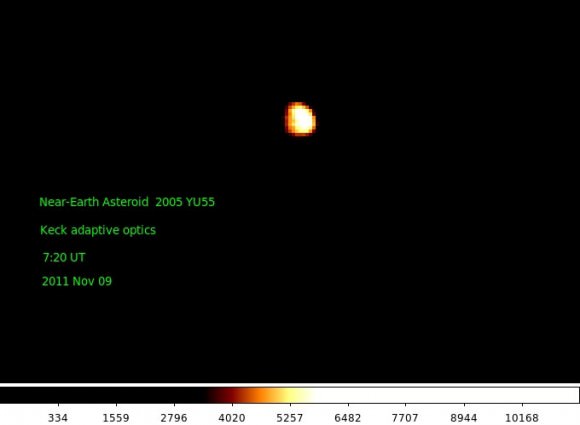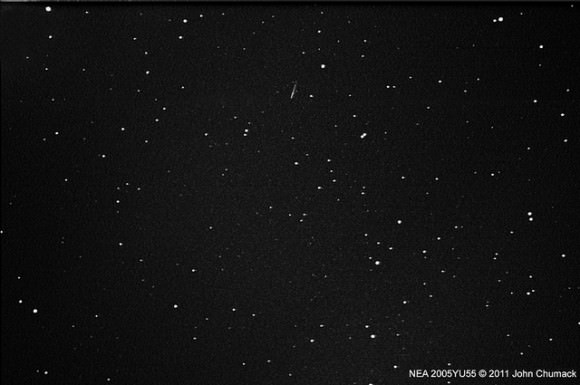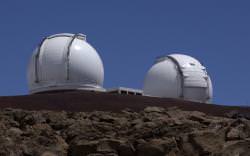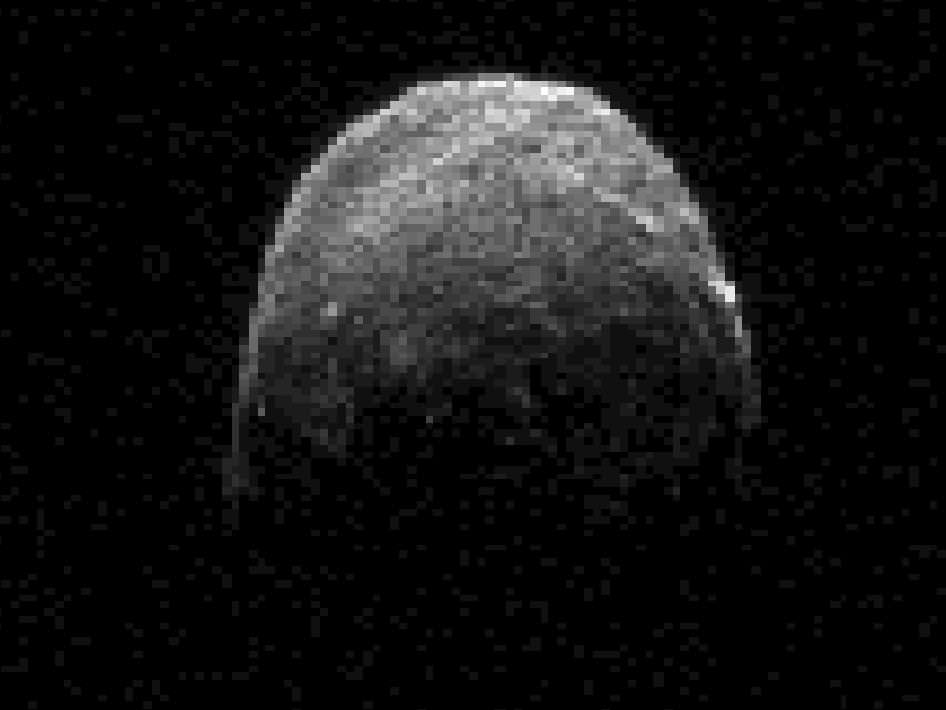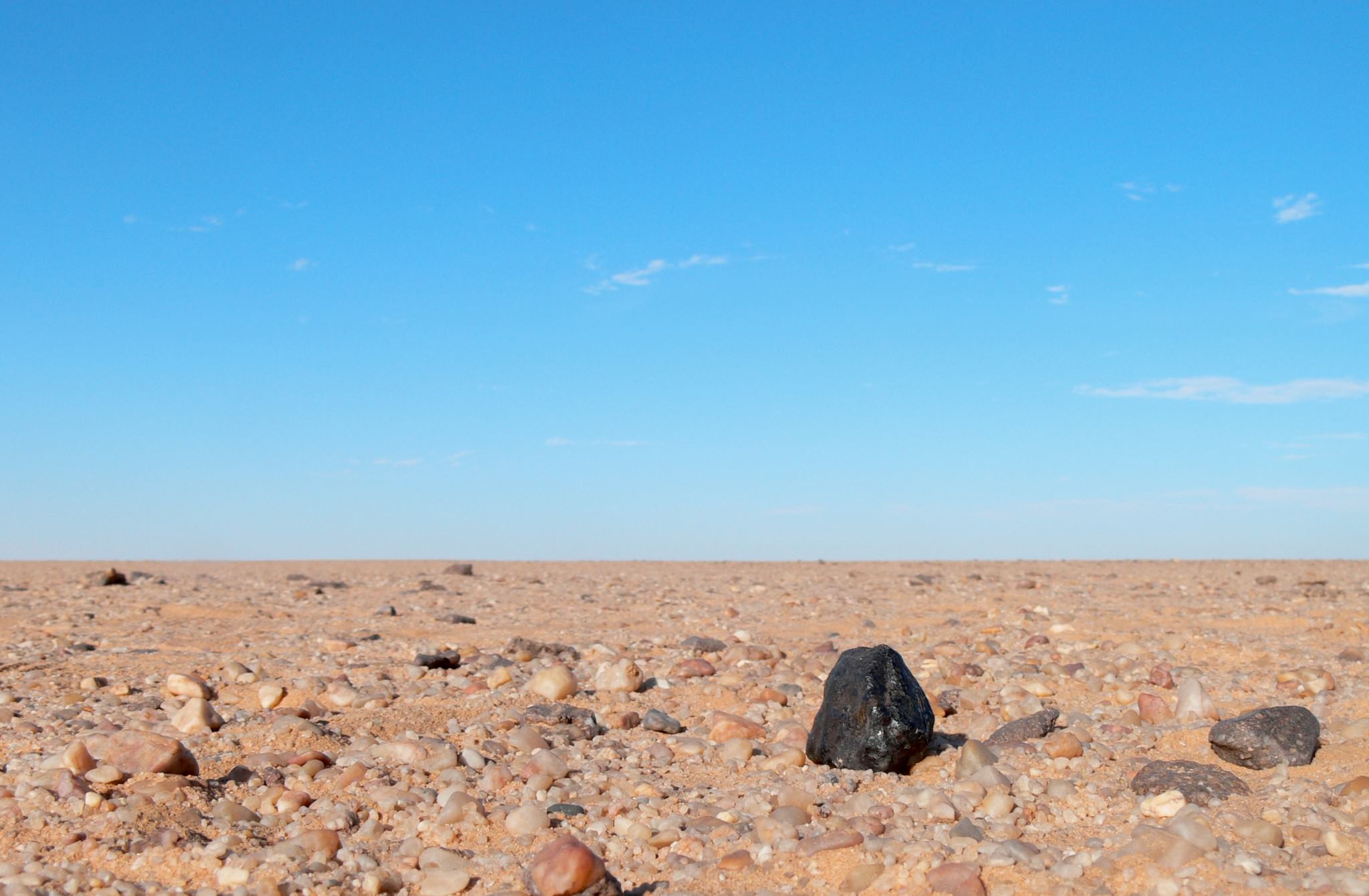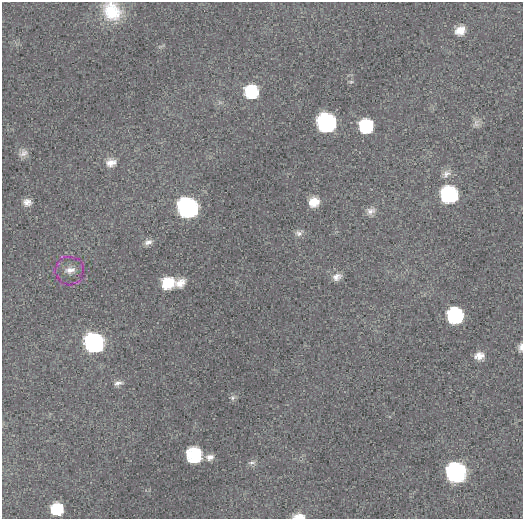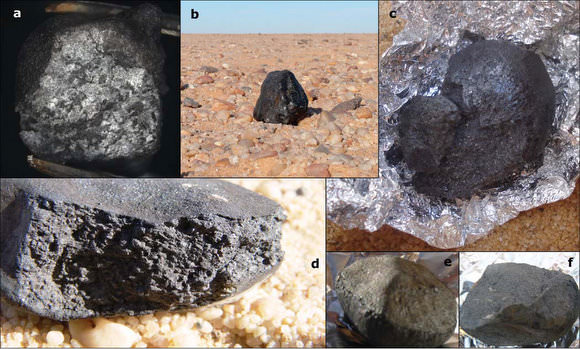[/caption]
NASA’s Dawn Asteroid Orbiter successfully spiraled down today to the closest orbit the probe will ever achieve around the giant asteroid Vesta, and has now begun critical science observations that will ultimately yield the mission’s highest resolution measurements of this spectacular body.
“What can be more exciting than to explore an alien world that until recently was virtually unknown!” Dr. Marc Rayman gushed in an exclusive interview with Universe Today. Rayman is Dawn’s Chief Engineer from NASA’s Jet Propulsion Lab (JPL) in Pasadena, Calif., and a protégé of Star Trek’s Mr. Scott.
Before Dawn, Vesta was little more than a fuzzy blob in the world’s most powerful telescopes. Vesta is the second most massive object in the main Asteroid Belt between Mars and Jupiter.
Dawn is now circling about Vesta at the lowest planned mapping orbit, dubbed LAMO for Low Altitude Mapping Orbit. The spacecraft is orbiting at an average altitude of barely 130 miles (210 kilometers) above the heavily bombarded and mysterious world that stems from the earliest eons of our solar system some 4.5 Billion years ago. Each orbit takes about 4.3 hours.
“It is both gratifying and exciting that Dawn has been performing so well,” Rayman told me.
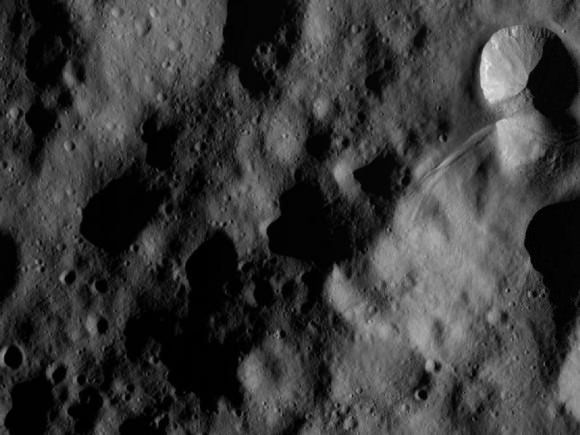
This image of the giant asteroid Vesta was obtained by Dawn in the evening Nov. 27 PST (early morning Nov. 28, UTC), as it was spiraling down from its high altitude mapping orbit to low altitude mapping orbit. Low altitude mapping orbit is the closest orbit Dawn will be making, at an average of 130 miles (210 kilometers) above the giant asteroid's surface. The framing camera obtained this image of an area in the northern mid-latitudes of Vesta from an altitude of about 140 miles (230 kilometers). Credit: NASA/JPL-Caltech/UCLA/MPS/DLR/IDA
Dawn arrived in orbit at Vesta in July 2011 after a nearly 4 year interplanetary cruise since blasting off atop a Delta II rocket from Cape Canaveral, Florida in September 2007. The probe then spent the first few weeks at an initial science survey altitude of about 1,700 miles (2,700 kilometers).
Gradually the spaceship spiraled down closer to Vesta using her ion propulsion thrusters.
See Vesta science orbit diagram, below, provided courtesy of Dr. Marc Rayman.
Along the way, the international science and engineering team commanded Dawn to make an intermediate stop this past Fall 2011 at the High Altitude Mapping orbit altitude (420 miles, or 680 kilometers).
“It is so cool now to have reached this low orbit [LAMO]. We already have a spectacular collection of images and other fascinating data on Vesta, and now we are going to gain even more,” Rayman told me.
“We have a great deal of work ahead to acquire our planned data here, and I’m looking forward to every bit!
Dawn will spend a minimum of 10 weeks acquiring data at the LAMO mapping orbit using all three onboard science instruments, provided by the US, Germany and Italy.
While the framing cameras (FC) from Germany and the Visible and Infrared Mapping spectrometer (VIR) from Italy will continue to gather mountains of data at their best resolution yet, the primary science focus of the LAMO orbit will be to collect data from the gamma ray and neutron detector (GRaND) and the gravity experiment.
GRaND will measure the elemental abundances on the surface of Vesta by studying the energy and neutron by-products that emanate from it as a result of the continuous bombardment of cosmic rays. The best data are obtained at the lowest altitude.
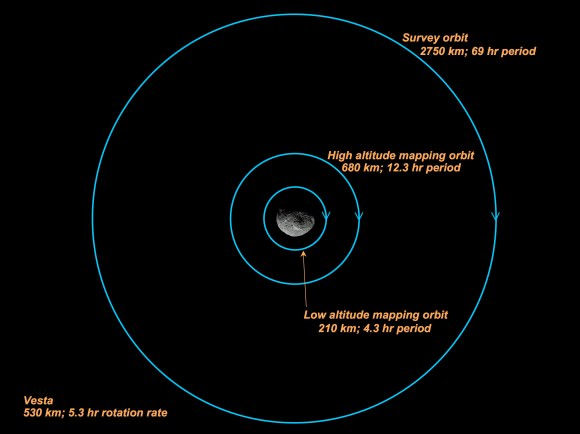
Credit: NASA/JPL-Caltech/Marc Rayman
By examining all the data in context, scientists hope to obtain a better understanding of the formation and evolution of the early solar system.
Vesta is a proto-planet, largely unchanged since its formation, and whose evolution into a larger planet was stopped cold by the massive gravitational influence of the planet Jupiter.
“Dawn’s visit to Vesta has been eye-opening so far, showing us troughs and peaks that telescopes only hinted at,” said Christopher Russell, Dawn’s principal investigator, based at UCLA. “It whets the appetite for a day when human explorers can see the wonders of asteroids for themselves.”
After investigating Vesta for about a year, the engineers will ignite Dawn’s ion propulsion thrusters and blast away to Ceres, the largest asteroid which may harbor water ice and is another potential outpost for extraterrestrial life
Dawn will be the first spaceship to orbit two worlds and is also the first mission to study the asteroid belt in detail.
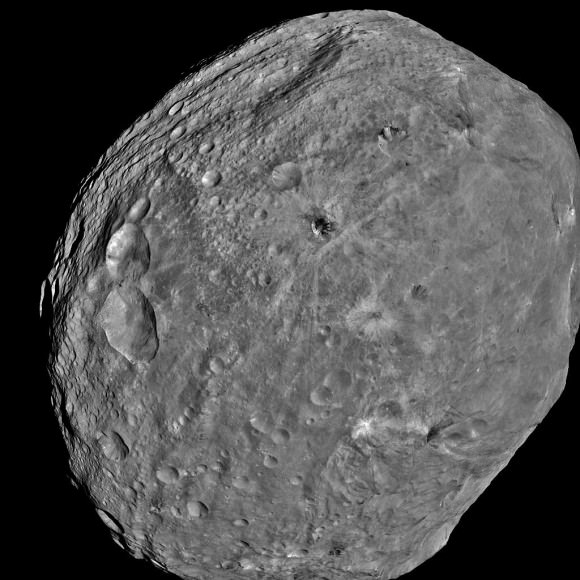
NASA's Dawn spacecraft obtained this image of the giant asteroid Vesta with its framing camera on July 24, 2011. It was taken from a distance of about 3,200 miles (5,200 kilometers). Before Dawn, Vesta was just a fuzzy blob in the most powerful telescopes. Dawn entered orbit around Vesta on July 15, and will spend a year orbiting the body before firing up the ion propulsion system to break orbit and speed to Ceres, the largest Asteroid. Credit: NASA/JPL-Caltech/UCLA/MPS/DLR/IDA
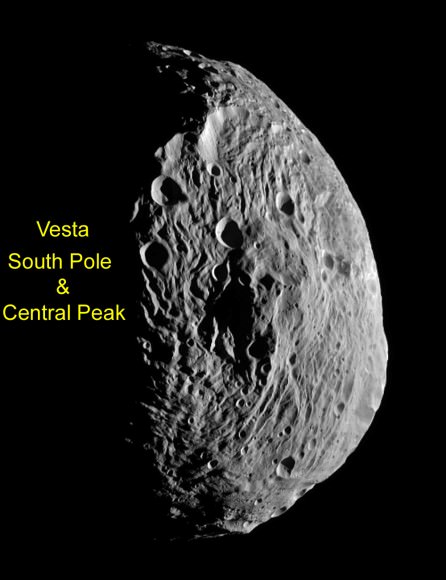
An ancient cosmic collision blasted away much of the south pole of Vesta, leaving behind an enoumous mountain about 3 times the height of Mt. Everest. NASA's Dawn spacecraft obtained this image centered on the south pole of Vesta with its framing camera on July 18, 2011 as it passed the terminator. The image has been enhanced to bring out more surface details. It was taken from a distance of about 6,500 miles (10,500 kilometers) away from the protoplanet Vesta. The smallest detail visible is about 1.2 miles (2.0 km). Credit: NASA/JPL-Caltech/UCLA/MPS/DLR/IDA. Enhanced and annotated by Ken Kremer
Read continuing features about Dawn by Ken Kremer starting here:
Rainbow of Colors Reveal Asteroid Vesta as More Like a Planet
Vrooming over Vivid Vestan Vistas in Vibrant 3 D – Video
NASA Planetary Science Trio Honored as ‘Best of What’s New’ in 2011- Curiosity/Dawn/MESSENGER
Dawn Discovers Surprise 2nd Giant South Pole Impact Basin at Strikingly Dichotomous Vesta
Amazing New View of the Mt. Everest of Vesta
Dramatic 3 D Imagery Showcases Vesta’s Pockmarked, Mountainous and Groovy Terrain
Rheasilvia – Super Mysterious South Pole Basin at Vesta
Space Spectacular — Rotation Movies of Vesta
3 D Alien Snowman Graces Vesta
NASA Unveils Thrilling First Full Frame Images of Vesta from Dawn
Dawn Spirals Down Closer to Vesta’s South Pole Impact Basin

